In the College of Arts and Sciences, there are always big things happening. Take a look at some of our highlights from September 2016:
Gender, Women, and Sexuality Studies
Journalism and Mass Communications
Sociology, Anthropology, and Social Work
Art
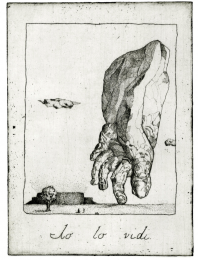 Associate Professor of Printmaking Jason Scuilla was invited to show his prints, including lo Lo Vidi (pictured at left), in an invitational group exhibition titled Grafica D’Arte Americana Contemporanea, September 9 – 23 at the Galleria Il Bisonte, Florence, Italy. The exhibition was curated by Andrew DeCaen.
Associate Professor of Printmaking Jason Scuilla was invited to show his prints, including lo Lo Vidi (pictured at left), in an invitational group exhibition titled Grafica D’Arte Americana Contemporanea, September 9 – 23 at the Galleria Il Bisonte, Florence, Italy. The exhibition was curated by Andrew DeCaen.
Assistant Professor of Graphic Design Daniel Warner had two posters selected to appear in the Ecuador Poster Bienal. The Ecuador Poster Bienal is the principal axis of visual communication for the new continent, focusing its efforts as an academic, professional and creative event. Pictured at right is Warner’s Verfall. His poster Music Is Oxygen also received an Award of Excellence from Creative Quarterly: The Journal of Art and Design.
Assistant Professor of Ceramics Amy Santoferraro had works accepted into the group show Ceramics as Deception at the Urban Arts Space gallery in Columbus, Ohio. Pictured at left is Santoferraro’s Bubblegum. Return to top.
Biology
Alice Boyle was invited to two oral symposium presentations at the North American Ornithological Conference in Washington DC in late August and also presented three co-authored sessions with members of her K-State lab at the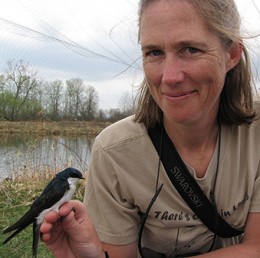 same meeting. The lab and K-State Biology had a major presence at this meeting—the largest ornithological conference in history.
same meeting. The lab and K-State Biology had a major presence at this meeting—the largest ornithological conference in history.
Boyle is also spearheading a two-year, $200,000 National Science Foundation project to investigate how climate variation affects the survival, condition and reproduction of a small tropical bird, the white-ruffed manakin. The study aims to fill important information gaps that hamper our ability to predict consequences and mitigate ongoing global climate change.
Kathrin Schrick has been awarded a $321,000 grant from the National Science Foundation Genetic Mechanisms Program in the Division of Molecular and Cellular Biosciences. The gran, titled “START Lipid/Sterol Binding Domains in Homeodomain Transcription Factors from Plants,” will enable research to investigate protein-metabolite interactions underlying changes in gene expression in plants using the model system Arabidopsis. Schrick says, “We want to understand how plants respond to internal metabolic signals during development. The regulatory proteins we study are known to affect biomass in crop plants, so elucidating the mechanisms underlying transcriptional activity is of relevance to agriculture as well as to ecological systems.” The grant will fund postdoctoral trainees, STEM outreach activities, as well as two undergraduate summer students per year to participate in the Division of Biology REU program on Ecology and Evolutionary Biology of Changing Environments. Return to top.
Economics
Mohaned Al-Hamdi published a research study titled “Using the Environmental Kuznets Curve to Study the Mutual Effects between CO2 Emissions and Economic Growth in Jordan” in the American Journal of Agricultural and Biological Sciences. Co-authored with Mohammad Alawin, Kais Alwan and Saeed Al-Tarawneh; the study analyzes the dynamic relationship between economic growth and CO2 emissions in Jordan using the Environmental Kuznets Curve, looking at the direction of the causal relationship both in the long and short-run to determine the mutual effects between the two variables during the 1980-2010 period. Return to top.
English
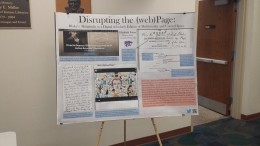 Elizabeth Potter (MA ’17) and Brennan Saddler (MA ’17) presented research at the forum Places, Spaces, Sites: Mapping Critical Intersections in Digital Humanities in Lawrence, Kansas on October 1. Potter presented “Disrupting the Page: Blake’s Marginalia as a Digital Scholarly Edition of Multivocality and Unused Space,” (pictured) and Saddler presented “Mapping Wordsworth’s ‘Tintern ‘Abbey.'”
Elizabeth Potter (MA ’17) and Brennan Saddler (MA ’17) presented research at the forum Places, Spaces, Sites: Mapping Critical Intersections in Digital Humanities in Lawrence, Kansas on October 1. Potter presented “Disrupting the Page: Blake’s Marginalia as a Digital Scholarly Edition of Multivocality and Unused Space,” (pictured) and Saddler presented “Mapping Wordsworth’s ‘Tintern ‘Abbey.'”
In addition, faculty and graduate students published the following items:
Traci Brimhall, Assistant Professor, published “Murder Ballad in the Arctic” (essay). Copper Nickel No. 23 (2016): 119-122.
Michele Janette, Professor, published “Alternative Historical Tetherings: Wilbur Wright, George Moses Horton, and Virginia Dare in Monique Truong’s Bitter in the Mouth.” Journal of Asian American Studies 19 (2016): 193-212.
Minadora Macheret (MA ’17), graduate student, published “Grief as Memory as it Belongs to the Daughter,” “Self-Portrait as Mythos,” and “Autogenesis” (poems). Connotation Press.
Philip Nel, University Distinguished Professor, published “‘Don’t assume anything’: A Conversation with Maurice Sendak.” Conversations with Maurice Sendak, ed. Peter Kunze. Jackson: UP Mississippi, 2016. 107-143.
Kara Northway, associate professor, published with colleagues Pam Bromley and Eliana Schonberg “Evaluating the Complexities of Tutor Collaboration in Cross-Institutional Writing Center Research.” Southern Discourse in the Center: A Journal of Multiliteracy and Innovation 20. 2 (2016): 1-18. Return to top.
Gender, Women, and Sexuality Studies
Valerie Padilla Carroll published “The Radical Possibilities of New (Feminist, Environmentalist) Domesticity: Housewifery as an Altermodernity Project,” in the latest issue of ISLE: Interdisciplinary Studies in Literature and Environment (Winter 2016). This article examines three books that promote this environmentalist, feminist, and radical domesticity to show that the radical possibilities of “new domesticity” as an environmentalist and feminist altermodernity project can be  read as an anti-capitalist environmental activism that embraces a global vision of sustainability based on reciprocity and care. Drawing from Michael Hardt’s and Antonio Negri’s work on affective labor and altermodernity, this article argues that even while new domesticity emerges from these authors’ privileged positions, as a feminist and environmentalist altermodernity project, new domesticity has the potential to be a potent revolutionary activism.
read as an anti-capitalist environmental activism that embraces a global vision of sustainability based on reciprocity and care. Drawing from Michael Hardt’s and Antonio Negri’s work on affective labor and altermodernity, this article argues that even while new domesticity emerges from these authors’ privileged positions, as a feminist and environmentalist altermodernity project, new domesticity has the potential to be a potent revolutionary activism.
Tushabe, associate professor in Gender, Women, and Sexuality studies, published the article “Sexual Rights in Uganda and the Struggle for Meaning in Community” in the Journal of Lesbian Studies. The article historizes interactions of colonial an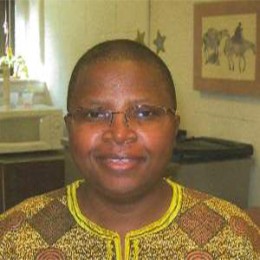 d indigenous knowledges in the construction of homosexuality and enduring exchange of same-sex erotic energies in Uganda. While debates focus on the existence or absence of homosexuality in Uganda, the article attempts to redirect attention from colonial constructions of homosexuality to indigenous and decolonial thought in relation to women who exchange same-sex erotic energies and their struggle for meaning in community. The article argues for pedagogies and epistemologies of memory and place within the framework of human rights. Return to top.
d indigenous knowledges in the construction of homosexuality and enduring exchange of same-sex erotic energies in Uganda. While debates focus on the existence or absence of homosexuality in Uganda, the article attempts to redirect attention from colonial constructions of homosexuality to indigenous and decolonial thought in relation to women who exchange same-sex erotic energies and their struggle for meaning in community. The article argues for pedagogies and epistemologies of memory and place within the framework of human rights. Return to top.
Geography
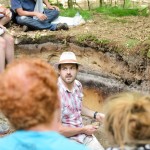 Arnaud Temme, associate professor, was named to the editorial board of the international journal Geomorphology and gave an invited talk titled “Soils as a Marker of Time – Taking Geomorphic Context into Account” at the annual Geological Society of America meeting in Denver. Temme’s research is at the crossroads of soils geography, geomorphology and land use sciences, with an emphasis on soil-landscape evolution and landscape modelling. [photo credit: Joris Schaap] Return to top.
Arnaud Temme, associate professor, was named to the editorial board of the international journal Geomorphology and gave an invited talk titled “Soils as a Marker of Time – Taking Geomorphic Context into Account” at the annual Geological Society of America meeting in Denver. Temme’s research is at the crossroads of soils geography, geomorphology and land use sciences, with an emphasis on soil-landscape evolution and landscape modelling. [photo credit: Joris Schaap] Return to top.
Journalism and Mass Communication
Tom Hallaq hosted alum Craig Bolerjack for several sessions as a guest speaker at K-State. Bolerjack, who graduated from the School of Journalism and Mass Communications in 1981, serves as the broadcast voice of the Utah Jazz NBA basketball team. Bolerjack has more than 30 years’ experience as a professional sports broadcaster. After working at television stations in both Topeka and Wichita, Bolerjack accepted a position as a sports anchor for KSL-TV in Salt Lake City. During his one-day visit, Bolerjack made direct contact with nearly 100 students from JMC and other departments across campus, as well as visiting with approximately a dozen 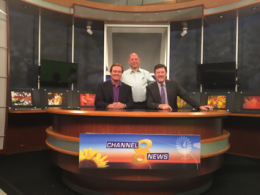 faculty members. He hopes this homecoming will be the beginning of regular visits to support his alma mater.
faculty members. He hopes this homecoming will be the beginning of regular visits to support his alma mater.
Hallaq also attended the SciComm 2016 conference in Lincoln, Nebraska, representing KSU science communication efforts at the national conference. SciComm is a two-day conference focusing on effective science communication. Hallaq’s presentation discussed K-State’s partnership with the Sunset Zoo’s program Behind the Science, and the collaboration between MC 471 and the National Science Foundation. He also served on a panel discussion addressing STEM in the K-12 classroom.
Nancy Muturi published results of a research study titled, “An Examination of Factors Associated With Self-Efficacy for Food Choice and Healthy Eating among Low-Income Adolescents in Three U.S. States” in Frontiers in Communication: Health Communication. The article was coauthored with Andalayo Kidd, Tazrin Khan, Kendra Kattelmann, Susan Zies, Erika Lindshield and Koushik Adhikari. Results showed a correlation between efficacy for healthy food choice and adolescents’ perceptions of behavioral control or sense of empowerment.
Steve Smethers published “Re-Creating Classic Top 40 Stations on Internet Radio: Audio Streaming Entrepreneurs Produce a New Kind of Mediated Nostalgia” in the September 2016 edition of the Journal of Entertainment Media Studies. Return to top.
Military Science (Army ROTC)
On Sept. 13, the Department of the Army announced the results of the U. S. Army Cadet Command (USACC) 2016 Senior Reserve Officer Training Corps (SROTC) Annual Program Review and K-State’s ROTC program was determined to meet the Secretary of the Army’s viability standards.
To be deemed a viable program, US Army Cadet Command requires an ROTC program to produce a minimum of 15 Commissioned Officers (Second Lieutenants) per year. These Second Lieutenants can commission into the Active Duty Component, US Army Reserve, or the Army National Guard. K-state’s Army ROTC has commissioned an average of 25 Second Lieutenants over the past 10 years, with more than 28 Second Lieutenants commissioned in the last three years.
With the exception of 2014, the K-State Army ROTC has exceeded the assigned Commission Mission for the program. In four out of the past five years, more than 25 percent of cadets have graduated as Distinguished Military Graduates, placing them in the top 20 percent of cadets nationwide. Return to top.
Modern Languages
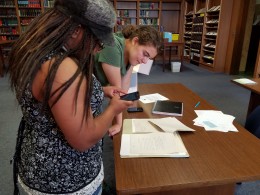 Assistant Professor of French Kathleen Antonioli and Associate Professor of French Melinda Cro took a group of students to the Eisenhower Presidential Library in Abilene, Kansas to examine the archives and materials related to Charles de Gaulle and WWII Franco-American Correspondence. The visit was an integral part of the course they are currently co-teaching, “Translating the ‘Freedom Papers’: Charles de Gaulle and WWII
Assistant Professor of French Kathleen Antonioli and Associate Professor of French Melinda Cro took a group of students to the Eisenhower Presidential Library in Abilene, Kansas to examine the archives and materials related to Charles de Gaulle and WWII Franco-American Correspondence. The visit was an integral part of the course they are currently co-teaching, “Translating the ‘Freedom Papers’: Charles de Gaulle and WWII 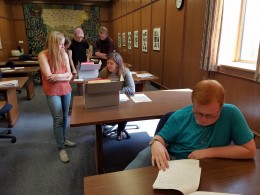 Correspondence.” The course examines the recently acquired archive by Hale Library entitled the “Freedom Papers,” and students are working on preparing professional-quality translations of the French archival letters for the library. The visit to the Eisenhower was an enriching experience, offering students the opportunity to learn about the style of war correspondence in English and increasing their understanding of the historical context within which the letters were written.
Correspondence.” The course examines the recently acquired archive by Hale Library entitled the “Freedom Papers,” and students are working on preparing professional-quality translations of the French archival letters for the library. The visit to the Eisenhower was an enriching experience, offering students the opportunity to learn about the style of war correspondence in English and increasing their understanding of the historical context within which the letters were written.
Staff members at the library helped students to learn more about working as a researcher in archives as well as develop their awareness of professional opportunities to become an archivist. In addition to leading this field trip on Sept. 23, Drs. Antonioli and Cro followed up on Sept. 30 with a poster presentation at the University of Kansas Digital Humanities Forum on their current project wherein students from the course collaborate to create a website describing the archive and chronicling their work. Return to top.
Music, Theatre, and Dance
The Kansas State University Saxophone Quartet has been selected as Winner of the MTNA Collegiate Level Chamber Music Competition for the state of Kansas. The quartet is coached by Dr. Anna Marie Wytko, associate professor of saxophone. The quartet will represent the state in the upcoming regional MTNA competition in Boulder in January 2017.
In addition, Wytko’s new recording was recently reviewed by Music Aficionado, 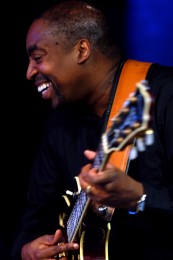 one of the foremost journals for Concert/Art Music, as “One of 10 Classical Recordings from 2016 You Must Hear!”
one of the foremost journals for Concert/Art Music, as “One of 10 Classical Recordings from 2016 You Must Hear!”
Wayne Goins, distinguished professor of jazz (pictured at right), has written the preface to the jazz anthology “Charlie Christian: Selected Solos from the Father of Modern Jazz Guitar,” compiled and transcribed by Chip Henderson. The anthology is published by Alfred Publishing. Henderson invited Goins to write the preface after reading Goins’ definitive biography of Charlie Christian, “A Biography of Charlie Christian: Jazz Guitar’s First King of Swing” in 2005. Return to top.
Philosophy
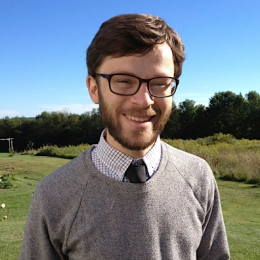 Philosophy Professor Graham Leach-Krouse has proven an important extension of a theorem governing abstraction principles. His proof will appear in a paper, “Generalizing Boolos’ Theorem” to be published in the Review of Symbolic Logic. Leach-Krouse’s paper concerns abstraction principles–a certain type of mathematical axiom used in what are sometimes called “Logicist” foundations of mathematics. Leach-Krouse generalizes a theorem discovered in 1998 by the logician George Boolos. This theorem turns out to apply much more broadly than has previously been realized. While Boolos’ result showed that the natural numbers are “characterizable” by abstraction principles, Leach-Krouse extends this finding to a broader range of structures, including the complete ordered field structure of the real numbers and certain initial segments of the universe of sets. Return to top.
Philosophy Professor Graham Leach-Krouse has proven an important extension of a theorem governing abstraction principles. His proof will appear in a paper, “Generalizing Boolos’ Theorem” to be published in the Review of Symbolic Logic. Leach-Krouse’s paper concerns abstraction principles–a certain type of mathematical axiom used in what are sometimes called “Logicist” foundations of mathematics. Leach-Krouse generalizes a theorem discovered in 1998 by the logician George Boolos. This theorem turns out to apply much more broadly than has previously been realized. While Boolos’ result showed that the natural numbers are “characterizable” by abstraction principles, Leach-Krouse extends this finding to a broader range of structures, including the complete ordered field structure of the real numbers and certain initial segments of the universe of sets. Return to top.
Psychological Sciences
A $1 million grant from the National Science Foundation will help researchers at Kansas State University and three Great Plains universities initiate research to digitize large sets of agriculture data and make it available to farmers, governments and other agencies.
Kansas State University is one of four universities that form the digital agriculture spoke as part of the Midwest Big Data Hub. The project, “Digital Agriculture-Unmanned Aircraft Systems, Plant Sciences and Education,” is part of the Big Data Research Development Initiative, launched in 2012 to help solve the nation’s most pressing challenges using large collections of digital data.
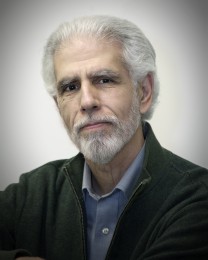 The National Science Foundation awarded a total of $10 million to 10 data hubs in four regions — the Midwest, Northeast, South and West — to form big data spokes to research topics unique to each of the regions.
The National Science Foundation awarded a total of $10 million to 10 data hubs in four regions — the Midwest, Northeast, South and West — to form big data spokes to research topics unique to each of the regions.
“A major component in the Midwest is agriculture,” said Gregory Monaco, Kansas State University research associate professor in the psychological sciences department and co-principal investigator of the project (pictured at right). “We are collaborating across institutions to build partnerships to potentially digitize large agriculture data sets and make them available to farmers, landowners, governments and other entities in the region for a spectrum of agricultural activities such as precision agriculture, ecosystem management and services, socioeconomic impacts and specific data-related issues.”
Monaco also serves as director for research and cyberinfrastructure initiatives for the Great Plains Network, a community of research and education professionals using advanced technologies to enhance the missions of their institutions and the region.
According to Monaco, the researchers are gathering data from sensors in farm and related equipment, aerial imagery from unmanned aircraft systems, survey data, management and policy models, and other sources for the project and to create additional educational materials. This story originally appeared in its entirety in K-State Today. Return to top.
Sociology, Anthropology, and Social Work
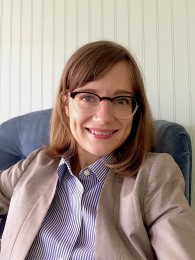 In the past 200 years there has been a global trend towards smaller families. This trend is now seen in countries in Africa and the Middle East, areas that traditionally had very high levels of fertility. In a new study published in the Journal of Marriage and Family, Associate Professor of Sociology Nicolette Manglos-Weber (pictured at left) and her co-author Alexander Weinreb use survey data from Turkey to examine whether cultural changes in how people select marriage partners might in part explain declining fertility.
In the past 200 years there has been a global trend towards smaller families. This trend is now seen in countries in Africa and the Middle East, areas that traditionally had very high levels of fertility. In a new study published in the Journal of Marriage and Family, Associate Professor of Sociology Nicolette Manglos-Weber (pictured at left) and her co-author Alexander Weinreb use survey data from Turkey to examine whether cultural changes in how people select marriage partners might in part explain declining fertility.
In Turkey, as in many other Middle Eastern countries, kinship groups called clans are important social structures and markers of identity. Traditionally marriage existed as a union between extended families, with the aim of securing resources and power within the clan. Marriages were usually arranged by those families and were often made between first cousins on the father’s side. So, for example, a woman would be given in marriage to her father’s brother’s son, so that her children would be kept within the larger clan unit. Women were also expected to have many children for the larger development of the clan.
Yet recently ideals of women’s autonomy and sexual intimacy have challenged this model, such that more and more young Turkish men and women want to choose their own partners for personal reasons. Manglos-Weber and Weinreb hypothesized that this trend may also mean those in such “own-choice” marriages are less inclined to have large families, which could explain population-level declines in fertility.
They found that women in own-choice marriages do indeed have fewer children and are also slightly more likely to use contraception. However, they also found that many of the marriages in their study were “own-choice,” but were also between first or second cousins; or they were arranged, but to unrelated spouses. This suggests that young men and women in Turkey continue to negotiate the traditions of their parents even as they adopt more “modern” ways of marrying and making families.
The lesson in the study is that cultural changes can have far-ranging impacts on how populations grow, change, or develop over time; and that such changes often take place through many small, intimate decisions about love and family. Return to top.
Statistics
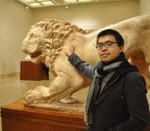 Xintong Li, (pictured at right) a doctoral student in the Department of Statistics, is the recipient of a grant from the International Association for Mathematical Geosciences (IAMG) Grants Committee. This year there were only three awards, each worth $2500. The title of Xintong’s work is “Variogram Matrix Functions on All Spheres.” With more and more data collected on a global scale in environmental science, geophysics and related fields, variogram models on spheres play an increasingly important role in applications such as the impact of soil greenhouse gas fluxes on global warming potential and temperature-precipitation relationships in climate change. Xintong’s work is under the direction of Juan Du.
Xintong Li, (pictured at right) a doctoral student in the Department of Statistics, is the recipient of a grant from the International Association for Mathematical Geosciences (IAMG) Grants Committee. This year there were only three awards, each worth $2500. The title of Xintong’s work is “Variogram Matrix Functions on All Spheres.” With more and more data collected on a global scale in environmental science, geophysics and related fields, variogram models on spheres play an increasingly important role in applications such as the impact of soil greenhouse gas fluxes on global warming potential and temperature-precipitation relationships in climate change. Xintong’s work is under the direction of Juan Du.
Associated Professor of Statistics Nora Bello led a multi-institutional interdisciplinary effort to clarify recent controversies on the important issue of proper experimental replication in animal studies and associated implications for modeling and inference. This was a joint effort with applied statistical researchers from University of Nebraska-Lincoln, Michigan State University, Purdue University, Ohio State University, University of Arkansas, the USDA Agricultural Research Service and the National Agricultural Statistical Services. The paper, of which Bello was lead author, was published in the September issue of the Journal of Dairy Science, the leading peer-reviewed general dairy research journal in the world. Return to top.

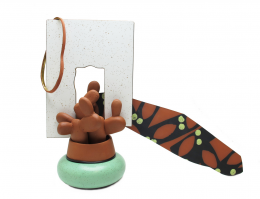
thank you. I would like to receive this newsletter.
Hi Mike,
Are you registered with the K-State Alumni Association? Our email distribution is handled by them directly. Let me know if you have any questions about that. =) Thanks for reading!
That paragraph about Valerie Carroll’s paper was obfuscated with important-sounding, but meaningless phrases. Difficult to read, because the synopsis didn’t actually mean anything. I hope your journalism students pick this up.
John, thanks for the feedback! We will work to pare down the departmental submissions into snappier, more meaningful language in future issues.
That’s an excellent idea: “snappier and more meaning.” Is this pub written for academicians or regular folks?
Pat,
It’s meant for both campus and alumni audiences, but is based on submissions directly from department heads within the college. As the compiler and editor of the newsletter, I will make note to request a more conversational voice in the future and also edit with that goal in mind. Thank you for your input!
why is history no part of the newsletter?
Skip,
Departments are only featured when they submit items for the issue.
We will most likely be featuring the following accomplishments from the Department of History in the October issue:
http://www.k-state.edu/today/announcement.php?id=30344
http://www.k-state.edu/media/newsreleases/2016-10/jamessherow102416.html